North East Victoria, South West Slopes NSW, South West Victoria (Upper) – Overview
The South West Slopes of NSW, North East Victoria and Upper South West region of Victoria have been grouped together on this site as many of the issues and potential management options are shared across this zone. The rough boundary for this region can be found on the regional package home page.
The region is typically characterised by ancient Ordovician soils that have been eroded and relocated in the landscape. These soils tend to be shallow, often with distinct changes down the profile, acidic and low in nutrients. While some parts of the region receive high annual rainfall, summers are frequently hot and dry (see climate), limiting pasture production and impacting on species persistence. Winter conditions are usually cold and wet, especially at altitude, which also limits pasture production. A key feature of properties in this region is the large degree of variability in the productive capacity both between paddocks and within paddocks. Differing climatic conditions, soils and aspect can result in large differences in pasture species adaptability and feedbase production potential. Animal production systems have to be matched to a more diverse feedbase and pasture management practices and resource allocation decisions are more complex than on properties in less variable landscapes.
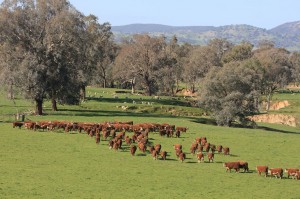
Ian Locke’s farm, Holbrook, NSW
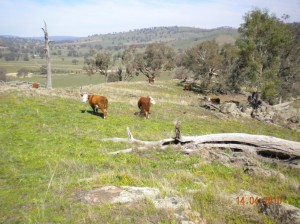
Land Use
Pasture species use
In this region climate, soils, aspect and arability place strict boundaries around pasture species adaptability and persistence. Annual rainfall increases significantly with increasing altitude which can potentially support a greater range of perennial species. However, they are also highly variable landscapes with arable land largely restricted to small areas of valley floors and the lower slopes. Species adaptability and persistence is often limited on the slopes and hills by shallow, infertile, acid soils (to depth) while water-logging imposes the main restriction on the valley floors. Native grass species remain the dominant perennials on steeper country with introduced species such as phalaris, cocksfoot and Mediterranean tall fescue or summer dormant tall fescue used in the lower parts of the landscape. The summer dry climate requires most species to have some level of dormancy to survive this period. Deep rooted species like lucerne, which can survive these conditions, are strictly limited to the small arable areas that are not affected by water-logging and can be effectively limed to overcome soil acidity. Annual species (grasses and clovers) that accompany the perennial grasses often make up much of the available feed in these pastures, particularly native grass based pastures, and management practices need to reflect this.
The proportion of arable soils increases in the lower slopes of the region as they extend towards the plains allowing improved pastures and crops to be sown, but in a much lower rainfall environment. While soil depth is generally greater, soil acidity is still a major production constraint. Dense sub-soils can make some paddocks subject to water-logging in areas that do not drain well. A long history of cropping and pasture improvement means little native grasses remain. There are larger areas of land suitable for establishing lucerne as a short term pasture in a cropping rotation. Most introduced perennial grasses are approaching the limits of their adaptability in this part if the region. Persistence can often be compromised by poor paddock selection and grazing management, particularly in dry years. Annual pastures used in cropping rotations and fodder crops can be a very important component of the feedbase in this part of the region.
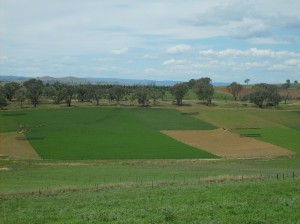
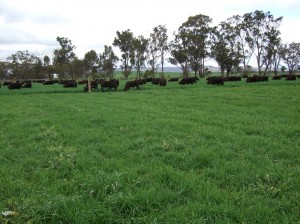
Livestock systems
Many of the properties in this zone may be classified as mixed farming operations but are generally livestock dominant due to the limited area of arable land. Significant numbers of both sheep and cattle are present in the region with sheep tending to dominate the cropping areas and cattle less arable country. And while wool has been the traditional sheep enterprise, there has been a shift towards meat production enterprises reflecting buoyant prices both during and since the millennium drought. One of the longer term consequences of the shift to meat production will be the higher removal of phosphorus in these systems compared to wool systems. This will require a change in fertility management practices. Most livestock enterprises are breeding operations with some livestock trading used to capitalise on good seasons and reduce risk. Many properties are stocked at levels lower than those run before the drought. This reflects the adoption of a lower risk position by producers who experienced high feeding costs during the drought and the time it takes to rebuild a flock or herd after de-stocking. While high potential returns have created interest in expanding cropping areas, a series of wet harvests and limited available cropping country has limited this expansion.
Small pockets of commercial forestry exist in this region, most significantly around the Tumut district in southern NSW.
Challenges and opportunities
- The temperate summer dry environment makes it challenging to accurately match livestock needs to feed production. The feed supply is often of high quality and low availability in autumn and winter and the reverse in summer. Livestock enterprises that have relatively similar feed demands over the whole year need to be managed carefully to minimise excessive feeding costs but may come at the expense of lower stocking rates. Building flexibility into the livestock enterprise can help spread these risks. EverGraze research at Hamilton and Wagga Wagga looked at systems that can address some these risks on improved pastures.
- Shifting from running dry stock (wethers) to reproductive enterprises on native pastures presents opportunities for higher margins, but may require higher phosphorus inputs and greater management skill to maintain ground cover and pasture composition while meeting livestock condition targets. EverGraze research at Chiltern and Holbrook addressed some of these issues.
- Variability in the landscape poses a number of management challenges. This variability can strongly influence the type of pasture present, its production potential, and options for grazing and fertility management. A good knowledge of the soils and pasture species present can identify the drivers of feedbase production and help producers adopt appropriate management strategies. Opportunities may also exist to improve the productivity of the whole enterprise with the adoption of specialised pastures and fodder crops.
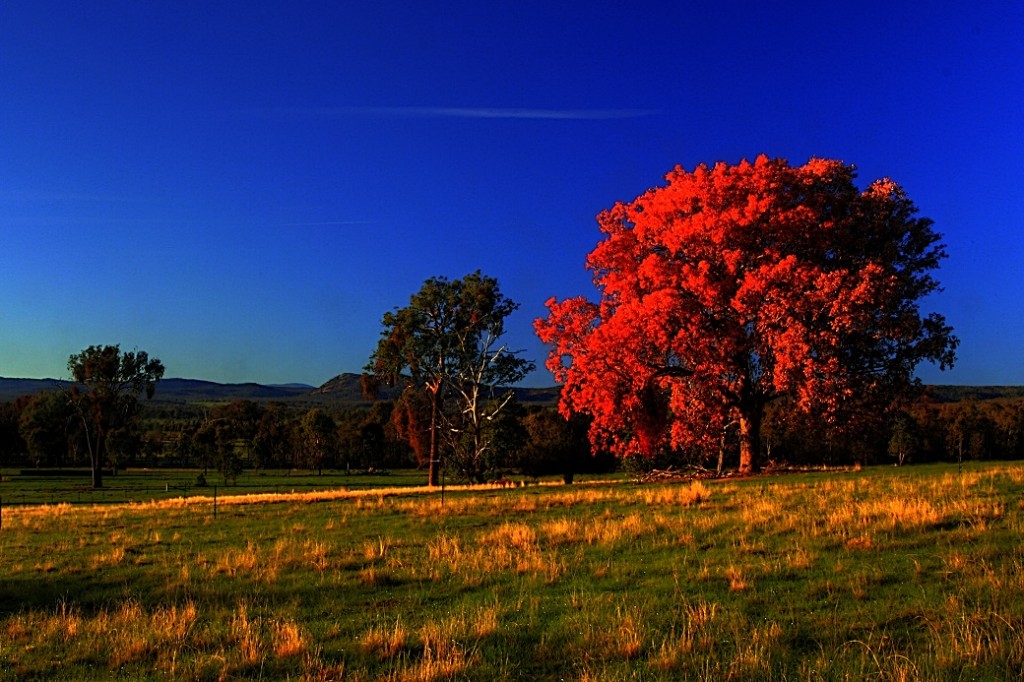
- Native pastures and a lightning struck tree at Chiltern EverGraze Proof Site.
Photo: David Marland.

